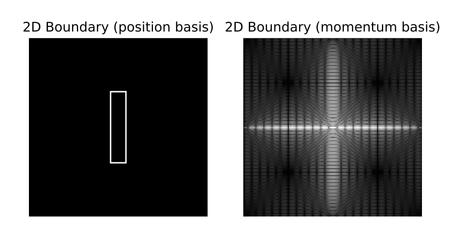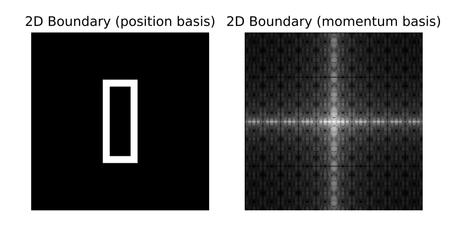I want to pass on this lucid posting by "Sean L" of Boston to the community.wakingup.com site:
The physics of nonduality
In
this context I mean “nonduality” as it refers to there being no real
subject-object separation or duality. One of the implications of physics
that originally led me to investigate notions of “awakening” and
“no-self” is the idea that there aren’t really any separate objects. We can form very self-consistent and useful concepts of objects (a car, an atom, a self, a city), but from the perspective of the universe itself
such objects don’t actually exist as well-defined independent “things.”
All that’s real is the universe as one giant, self-interacting,
dynamic, but ultimately singular “thing.” If you try to partition
off one part of the universe (a self, a galaxy) from the rest, you’ll
find that you can’t actually do so in a physically meaningful way (and
certainly not one that persists over time). All parts of the universe
constantly interact with their local environment, exchanging mass and
energy. Objectively, physics says that all points in spacetime are
characterized by values of different types of fields and that’s all
there is to it. Analogy: you might see this word -->self<-- on
your computer screen and think of it as an object, but really
it’s just a pattern of independent adjacent pixel values that you’re
mapping to a concept. There is no objectively physically real “thing” that is the word self (just a well defined and useful concept).
This
is akin to the idea that few if any of the cells making up your body
now are the same as when you were younger. Or the idea that the exact
pattern you consider to be “you” in this moment will not be numerically
identical to what you consider “you” in the next picosecond. Or the idea
that there is nothing that I could draw a closed physical boundary
around that perfectly encloses the essence of “you” such that
excluding anything inside that boundary means it would no longer contain
“you” and including anything currently outside the boundary would mean
it contains more than just “you.” This is true even if you try to
draw the boundary around only your brain or just specific parts of your
brain. I think this is a fun philosophical idea, but also one that
often gets the response of “ok, yeah, sure I guess that’s all logically
consistent,” but then still feels esoteric. It often feels like it’s
just semantics, or splitting hairs, or somehow not something that really threatens the idea of identity or of a physical self.
I was recently discussing with another WakingUp user that what made this notion far more visceral and convincing to me (enough to motivate me to go out in search of what “I” actually am, which has ultimately led me here) was realizing that even the very idea of trying to draw a boundary around a “thing” is objectively meaningless. So, I thought I’d share what I mean by that in case others find it interesting too :) !


Here
are four pictures. The two on the left are pictures of very simple
boundaries of varying thickness that one might try to draw around a
singular “thing” (perhaps a self?) to demonstrate that it is indeed a
well defined object. The two pictures on the right are of the exact same “boundaries” as on the left,
but as they would be seen by a creature that evolved to perceive
reality in the momentum basis. I’ll better explain what that means in a
moment, but the key point is that the pictures on the left and right are
(as far as physics or objective reality is concerned) exactly
equivalent representations of the same part of reality. Both sets of
pictures are perceptual “pointers” to the same part of the universe. You
literally cannot say that one is a more veridical or more accurate
depiction of reality than the other, because they are equivalent
mathematical descriptions of the same underlying objective structure.
Humans just happen to have a bias toward the left images.
So then… what could these “boundaries” be enclosing in the pictures on the right? I sure can’t tell. Nor do I think it even makes sense to ask the question! Our sense that there are discrete “objects” in the universe (including selves) seems intuitive when perceiving the universe as shown on the left (as we do). But when perceiving the exact same reality as shown on the right I find this belief very quickly breaks down. There simply is no singular, bounded, contained “thing” on the right. Anything that might at first appear on the left to be a separable object will be completely mixed up with and inseparable from its “surroundings” when viewed on the right, and vice-versa. The boundary itself clearly isn’t even a boundary. Boundaries are (very useful!) concepts, but they have no ultimate objective physical meaning.
----------------------
Some technical details for those interested (ignore this unless interested):
You can think of a basis like a fancy coordinate system. Analogy: I can define the positions of all the billiard balls on a pool table by defining an XY coordinate system on the table and listing the numerical coordinates of each ball. But if I stretch and/or rotate that coordinate system then all the numbers representing those same positions of the balls will change. The balls themselves haven’t changed positions, but my coordinate system-dependent “perception” of the balls is totally different. They're different ways of perceiving the same fundamental structure (billiard ball positions), even though that structure itself exists independently of any coordinate system. The left and right images are analogous to different coordinate systems, but in a more fundamental way.
In quantum
mechanics the correct description of reality is the wave function. For
an entangled system of particles you don’t have a separate wave function
for each particle. Instead, you have one multi-particle wave function
for the whole system (strictly speaking one could argue the entire
universe is most correctly described as a single giant and stupidly
complicated wave function). There is no way to break up this wave
function into separate single-particle wave functions (that’s what it
means for the particles to be entangled). What that means is from the
perspective of true reality, there literally aren’t separate distinct particles. That’s not
just an interpretation – it’s a testable (falsifiable) statement of
physical reality and one that has been extensively verified
experimentally. So, if you think of yourself as a distinct object, or at least
as a dynamical evolving system of interacting (but themselves distinct)
particles, sorry, but that’s simply not how we understand reality to
actually work :P .
However, to do anything useful we have to write down the wave function (e.g. so we can do calculations with it). We have to represent it mathematically. This requires choosing a basis in which to write it down, much like choosing a coordinate system with which to be able to write down the numerical positions of the billiard balls. A human-intuitive basis is the position basis, which is what’s shown in the left images. However, a completely equivalent way to write down the same wave function is in the momentum basis, which is what’s shown in the right images. There also exist many (really, infinite) other possible bases. Some bases will be more convenient than others depending on the type of calculation you’re trying to do. Ultimately, all bases are arbitrary and none are objectively real, because the universe doesn’t need to “write down” a wave function to compute it. The universe just is. To me, the equivalent representation of the same underlying reality in an infinite diversity of possible Hilbert Spaces (i.e. using different bases) much more viscerally drives home the point that there really are no separate objects (including selves). That’s not just philosophy! There’s just one objective reality (one thing, no duality) that can be perceived in an infinite variety of ways, each with different pros and cons. And our way of perceiving reality lends itself to concepts of separate things and objects.
There are other parts of physics I didn’t get into here that I think demonstrate that the true nature of the universe must be nondual (maybe to be discussed later). For example, the lack of room for free will or the indistinguishability of particles. If you actually read this whole post, thanks for your time and attention, and I hope you found it as interesting as I do!

